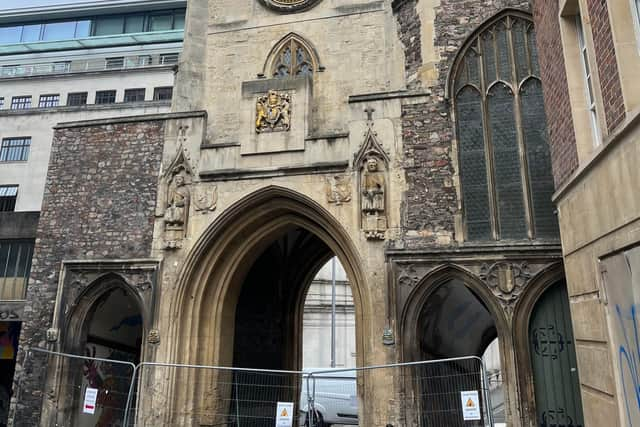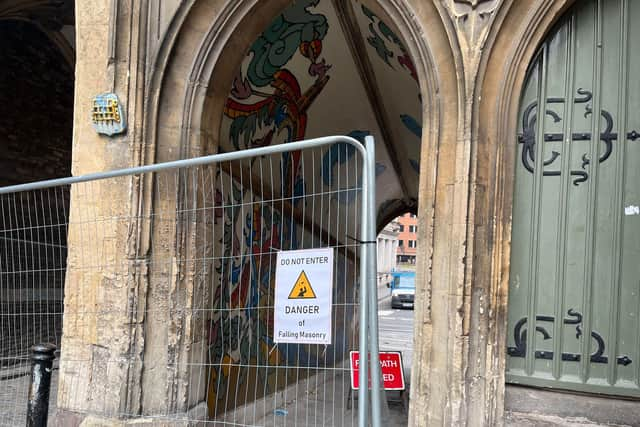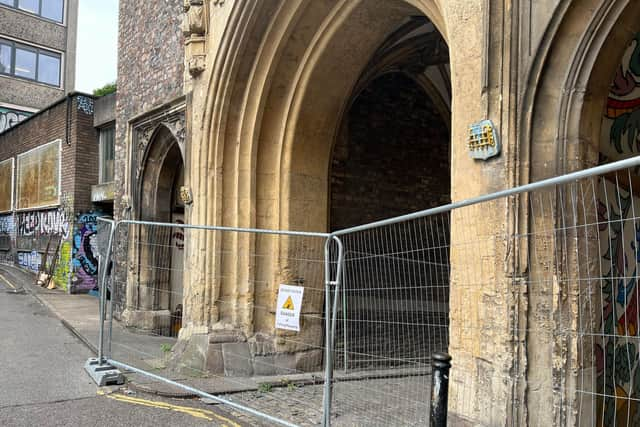Historic St John on the Wall church fenced off over ‘falling masonry’ - with no date yet given for opening
and live on Freeview channel 276
A church that has served as a major gateway into Bristol city centre for around 700 years has been sealed off after its spire was found to be unstable, sparking fears of ‘falling masonry’.
St John’s Church, more commonly known as St John on the Wall, was built into the city walls in the 14th Century and has stood there ever since, serving as a key link to Broadmead and High Street thanks to its Gothic stone archway.
Advertisement
Hide AdAdvertisement
Hide AdBut this has had to be been fenced off after investigative work by the Churches Conservation Trust (CCT), which look after the iconic building, found parts of its spire were ‘unstable’.


The church is normally open to the public who enjoy tours of the building including the vaulted crypt beneath it, but it has now also closed with an ‘exclusion zone’ around it for safety reasons.
Signs have also been put up warning passers-by of ‘falling masonry’. They can still use a modern archway to the left which takes you straight through to Quay Street, but it doesn’t boast the historic charm of the church archway.
The CCT is a charity helping to preserve more than 300 at risk churches up and down the country including St John’s, and now needs to find the funds to make the vital repairs.
Advertisement
Hide AdAdvertisement
Hide AdA spokesperson for the Trust told BristolWorld: “CCT’s conservation team have taken temporary measures to stabilise the spire and mitigate any immediate risk that this presents.


“We understand this may be disappointing to visitors, however, we are working with contractors and specialists to ensure that we can raise the necessary funds to make the repairs and to open the church again as soon as possible.”
It is not known how much the Trust needs to raise to make repairs to the church or how it intends to raise the funds, and therefore a reopening date can not yet be given.
What is known is that the church costs £4,486 a year to maintain.


Advertisement
Hide AdAdvertisement
Hide AdThe spokesperson added: “At this stage, following a period of monitoring, we have become concerned about the structural stability of the top of the spire and we are therefore conducting further investigation to identify causes and the best approach to the repairs.”
In the Medieval era five churches were built into Bristol’s city walls, acting both as part of the city’s defences as well as a place for travellers to offer prayer before a journey - St John’s is the only one that remains.
The church was founded by Walter Frampton, who was the mayor of Bristol at the time and lies buried in the church.
Comment Guidelines
National World encourages reader discussion on our stories. User feedback, insights and back-and-forth exchanges add a rich layer of context to reporting. Please review our Community Guidelines before commenting.
